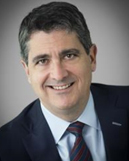“What Happens To My Pericardium During Heart Valve Surgery?” Asks Bernie
By Adam Pick on October 31, 2010
I just received a very interesting question from Bernie about the pericardium and heart valve surgery.
Bernie writes, “Hi Adam – At 51 years old, I need to replace my disease aortic valve due to a stenotic bicuspid valve. I’m curious to know about the pericardium. I know the sac has to be opened. But, then what? Do they stitch-up the pericardium after the valve is fixed? Or, is it left open? Thanks, Bernie.”
Interestingly… I had this exact same question prior to my heart valve surgery. However, before we answer Bernie’s question, I want to make sure we all know what the pericardium is.
The pericardium is the fluid-filled sac that surrounds the heart and the ends of the aorta, vena cava, and the pulmonary artery. The double-layered pericardium has several functions:
- The pericardium keeps the heart contained in the chest cavity.
- The pericardium also prevents the heart from over-expanding when blood volume increases.
- The pericardium limits heart motion.
Now that we know a little more about the pericardium, let’s consider what happens during heart valve surgery. Once the patient is on the heart-lung machine and the heart is stopped, the surgeon will approach the heart using a minimally invasive technique (mini-thoracotomy, mini-sternotomy) or median sternotomy. Then, the pericardium is opened. This enables the surgeon to access the diseased heart valve.
After the valve is fixed or replaced, the surgeon has two options relative to the pericardium. The surgeon can stitch-up the pericardium. Or, the surgeon can leave the pericardium open. Dr. Eric Roselli, MD, heart surgeon at the Cleveland Clinic, explained it to me in the following way:

“Some surgeons close the pericardium. Most do not. At The Cleveland Clinic, we do not close the pericardium. Our clinical work and research does not indicate a distinct benefit in closing the pericardium… And, there is a potential, increased risk for cardiac tamponade if the pericardium is closed.” — Dr. Eric Roselli
If you didn’t know, cardiac tamponade is a compression of the heart that can occur when blood or fluid builds up in the space between the myocardium (the heart muscle) and the pericardium. Dr. Roselli describes cardiac tamponade as a “suffocating of the heart with blood or other fluid that collects around it”.

Some other interesting facts about the pericardium:
- The pericardium is composed of very strong, very thick connective tissue. It appears this is why bovine and equine valves utilize the pericardial tissue of cows and horses when manufacturing leaflets for valve replacement devices.
- The patient’s own pericardium can be used for other purposes during surgery. According to Cincinnati Children’s Hopsital, a surgeon can remove a small portion of the pericardium to patch holes in the heart.
I hope this helped Bernie (and perhaps you) learn a little more about the pericardium and heart surgery. Thanks to Bernie for his question. And, a special thanks to Dr. Roselli for his ongoing support of this community.
Keep on tickin!
Adam
|
Gene Parrish says on October 31st, 2010 at 12:14 pm |
|
Bernie, be prepared for a very keen awareness of your heatbeat post surgery, a result of the absence of the pericardium. |
 |
|
Debby Tomlinson says on October 31st, 2010 at 12:17 pm |
|
Hi Adam, I was wondering if the pericardium eventually closes up if the surgeon leaves it open and how long that takes? Do patients with open pericardiums have more risk of infection? Thank you! |
 |
|
Jim Cummings says on October 31st, 2010 at 1:23 pm |
|
I had to deal with a tamponade episode 2 weeks after valve replacement. Read what happened here http://www.heart-valve-surgery.com/heart-surgery-blog/2008/10/03/bicuspid-valve-replacement-tamponade-and-heart-failure-adventure/ Jim |
 |
|
Sharon says on November 1st, 2010 at 7:48 am |
|
I have been dealing with ?A-Fib (or) sinus arrythemia and an elevated blood pressure and in my 3 1/3 month recovery. I am going to cardiac rehab also. Is this a normal thing, anybody else having this problem? |
 |
|
Gene Parrish says on November 1st, 2010 at 9:33 am |
|
Sharon, I suffered from PACs & PVCs for a good while (longer than 3 months) after my operation. It is important to know if it is truly a-fib, or some other type of arrhythmia. My doctor finally switched my medication from a beta blocker to a calcium channel blocker, which has been much more effective in dealing with the rhythm disturbance. |
 |
|
Terry says on November 1st, 2010 at 5:47 pm |
|
Hi Sharon, I had mitral valve replacement surgery back at the beginning of March. I developed an arrhythmia with accompanying tachycardia that my cardiologist diagnosed as an “Atrial Flutter” a couple of months back, which may be similar to the problem you described, but without the accompanying rise in blood pressure. He put me on Amiodarone, 200mg once a day but after a few weeks with no result, doubled the dose to 200mg twice a day. Another 4 weeks later, still no satisfactory result. The next step is going to be electrocardioversion, which I have scheduled for this Thursday. They are going to shock my heart (literally) with the paddles, or pads, depending on doctor’s preference. Someone is actually going to say, “Clear!” just like the movies, though I have been assured that they use a much smaller shock than the one that would be required to start a heart. I have read up online about the procedure and even seen a couple of videos. I am going to stop watching at this point. There is only so much I really want to know… |
 |
|
Teresia R. Chase says on November 3rd, 2010 at 9:03 pm |
|
I developed pericarditis the 3rd day after my surgery for a bovine aortal valve replacement. My cardiologist explained that the pericardium is best left unstitched and then, in the healing process, sometimes the open edges can flap around. Surprisingly the cure for this condition was simple. I just had to take 400 mg of ibuprofen 3 times a day for ten days and the symptoms went away. It was scary while it happened, however, because I felt like my heart was thumping harder and irregularly during those episodes. The cardiologist explained that for awhile after surgery the heart is actually a little loose in there, and if you lie on your left side it shifts position which makes you feel an awful thump. After the pericarditis healed, lying on my left side is no longer a problem. |
 |
|
Sue H. says on November 20th, 2010 at 12:29 pm |
|
I was told a couple of weeks ago by my cardiologist that I’ve progressed to severe stenosis (from my bicuspid aortic valve). I am supposedly asymptomatic (although I am tired during the day and when I rest, I sometimes feel that someone has their hands on my chest). Not sure if the stress or worrying is causing this sensation at night (as I tend to work through my worries), or if this is part of the disease process. Is it better to wait to do the heart valve replacement surgery or do it earlier? |
 |
|
Gene Parrish says on November 20th, 2010 at 1:58 pm |
|
Sue, from what I understand, even patients with severe stenosis can wait on the surgery, providing that you heart’s ejection fraction is satisfactory (at least 50%), and that your heart has not become enlarged because of the extra work load. But if you wait, it is imperative that you get an echo every six months or so to make sure everything is still holding steady. Good luck! (My situation is similar to yours, except that my problem is regurgitation instead of stenosis. The waiting game can be trying on your nerves!) |
 |
|
sharon says on November 21st, 2010 at 8:59 pm |
|
Love all this info |
 |
|
Teresia R. Chase says on November 23rd, 2010 at 9:51 am |
|
Adam: |
 |
|
ULANDA M. says on December 2nd, 2010 at 5:24 pm |
|
I HAD OPEN HEART SURGERY MARCH 2009 FOR REPAIR OF MITRAL VALVE PROLAPSE AND A HEART MURMUR. I HAD NUMBNESS IN MY LEFT BREAST FOR A LONG PERIOD. FOR THE PASS COUPLE OF DAYS I HAVE BEEN EXPERIENCING PAIN IN MY LEFT BREAST ESPECIALLY WHEN PRESSURE IS APPLIED BY LEANING ON MY LEFT HAND/ARM. NOT SURE IF THIS IS CAUSED BY AA PULLED MUSCLE OR SOMETHING ELSE. ANYONE HAS ANY THOUGHT WHY THIS MAY BE? |
 |
|
Terry says on January 5th, 2011 at 6:53 pm |
|
Terry, On the subject of pericarditis, I too developed pericarditis a couple of weeks ago. I was short of breath, my muscles burned and my ankles swelled up like grapefruits. This was particularly distressing because all of these symptoms showed up during a South American cruise. The swelling happened on the plane home. I had never had edema before. During the flight from Lima, Peru to Los Angeles, I developed sharp, intermittent chest pains, just above my heart. I was absolutely exhausted by the time I entered my front door. All I could manage to do was to run to a chair and collapse. All of these symptoms combined convinced me to call my doctor who told me “You’re in trouble. You need to get to an emergency room right away – do not pass go…” I was admitted to Ronald Reagan UCLA Medical Center on the 20th of December and was released on Christmas day. I was told by the cardiology team there that pericarditis is not uncommon in people who have had open heart surgery or have other underlying conditions. They used a number of antibiotics for the pericarditis and a slight case of pneumonia and I was feeling better in a matter of days. They have me on Colchicine to try and keep the pericarditis from recurring. I hope this information is useful. (The Other) Terry |
 |
|
brogers says on June 6th, 2012 at 6:17 pm |
|
Dear folks, |
 |
|
Emma Tolbert says on July 22nd, 2014 at 2:59 pm |
|
I had a 4 by-pass in April of 2011. While I was doing physical therapy, I was beginning to not be able to breath like I should. I started gaining weight for no apparent reason and my fatigue was at its lowest. My cardiologist discovered my pericirdium had been damaged during surgery. After months of testing, I had surgery set up. I had gotten all ready for it mentally. This was not something I was looking forward to. The surgern decided he didn’t want to or couldn’t do it at that time; therefore, I just decided I would learn to live with it. But I’m getting sooooooo tired. I can’t do anything without complete exhaustion. I also have MDS and of course with that comes exhaustion. I feel that in order to have a better quality of life, I need to do something. How extensive is the surgery for this? |
 |
|
Angela says on February 26th, 2015 at 9:35 am |
|
What about the friction between the heart and what’s left of the pericardium? I’m just learning anatomy and my book describes the pericardium sac, and fluid, as a way to decrease friction. So what happens after heart surgery? Is there a lot of friction? How does that change how well the heart works? |
 |
|
Abby says on September 19th, 2015 at 10:46 pm |
|
Thank you for answering the same question I had. |
 |
|
Conner says on October 27th, 2015 at 2:40 pm |
|
I’m attending EMT school and we are learning about Cardiac Tamponade, which is discussed in this article. My question is by what physical process does the sac mend itself when torn? |
 |
|
Sharon lynn goodrow says on August 17th, 2016 at 4:36 am |
|
My dad has been recovering from open heart surgery for10 days. Today they were unable to extract thick blood from around his heart. Seems they have been unable to stabilize his blood. What is going on here? |
 |
|
Alicia Nicoletti says on October 23rd, 2017 at 5:43 pm |
|
I was just released from the hosp today. I was in for surgery to drain fluid from the Pericardium (Pericardial Effusion) This is the second time in three months. Original problem was from Aortic Valve Endocarditis caused by a staph infection. I am fearful that this will happen again. My Dr. indicated that he left a window open in the Pericardium to continue to allow it to drain. I read in your article , and I see where the Cleveland Clinic does not close the Pericardium post operation to replace the Aortic Valve. This sounds like cardiac tamponade as described in the article above. I am not looking forward to doing this again. |
 |











